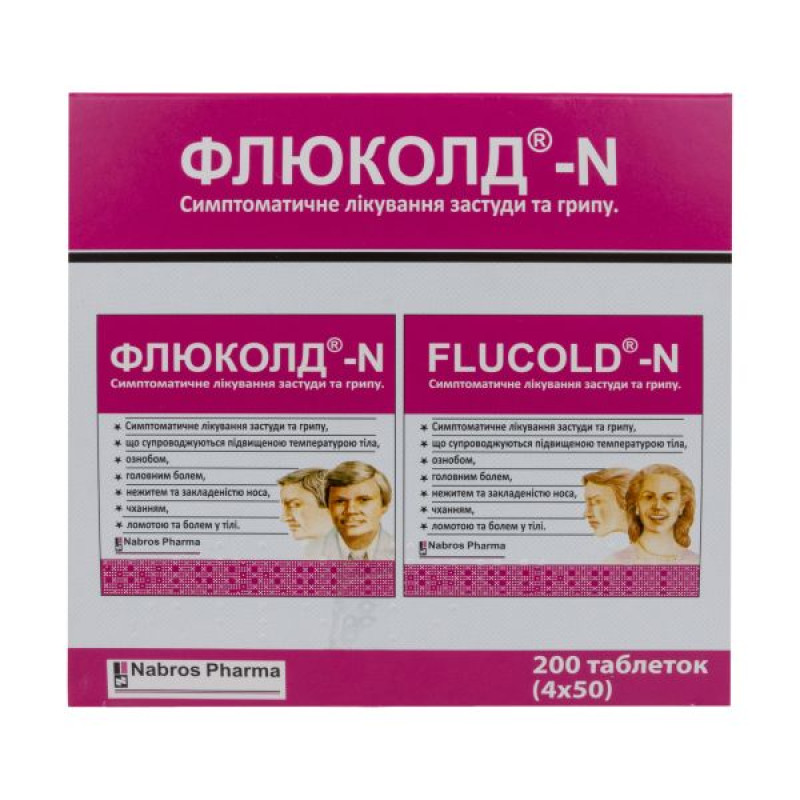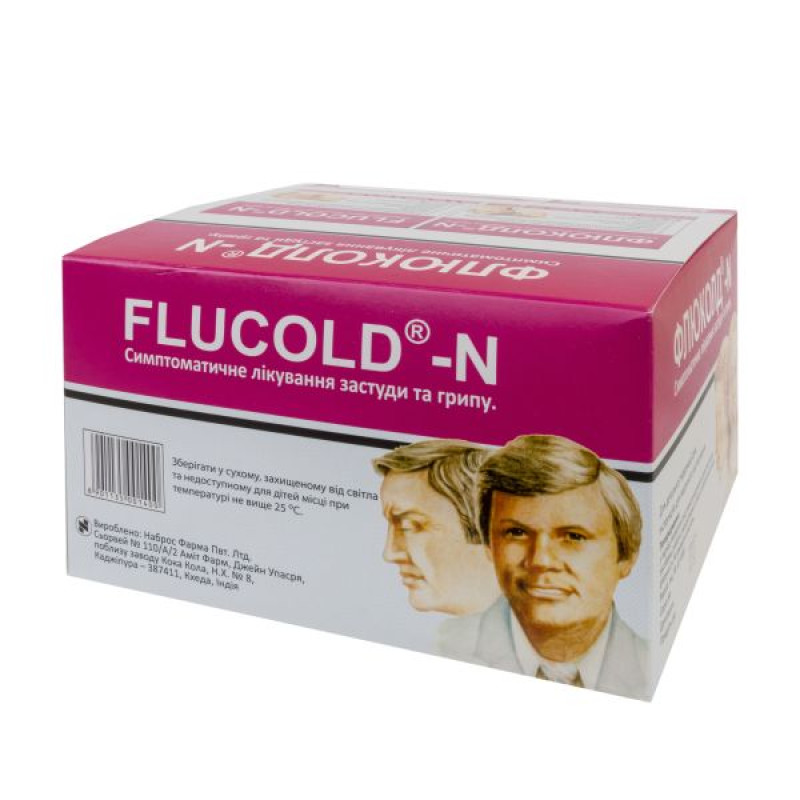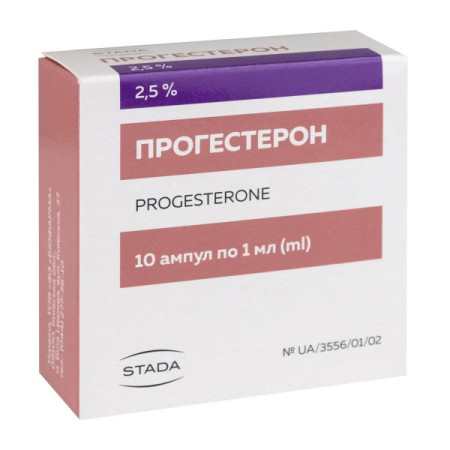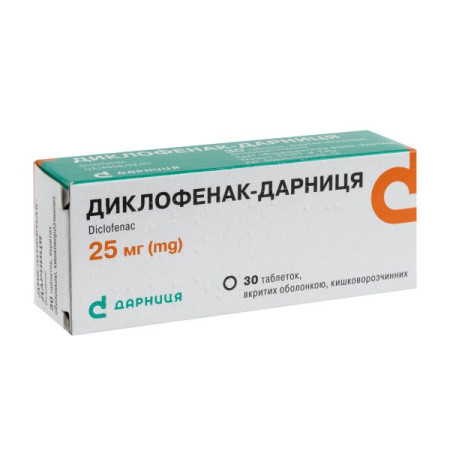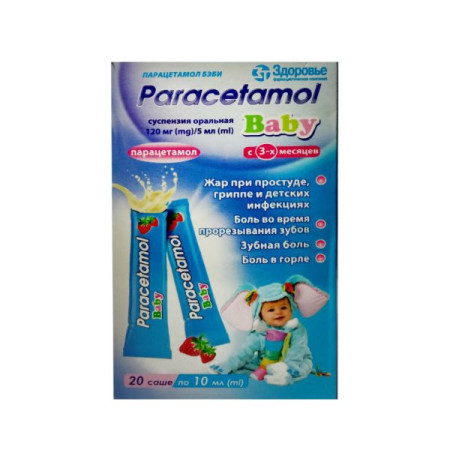Flukold-N tablets strip #200
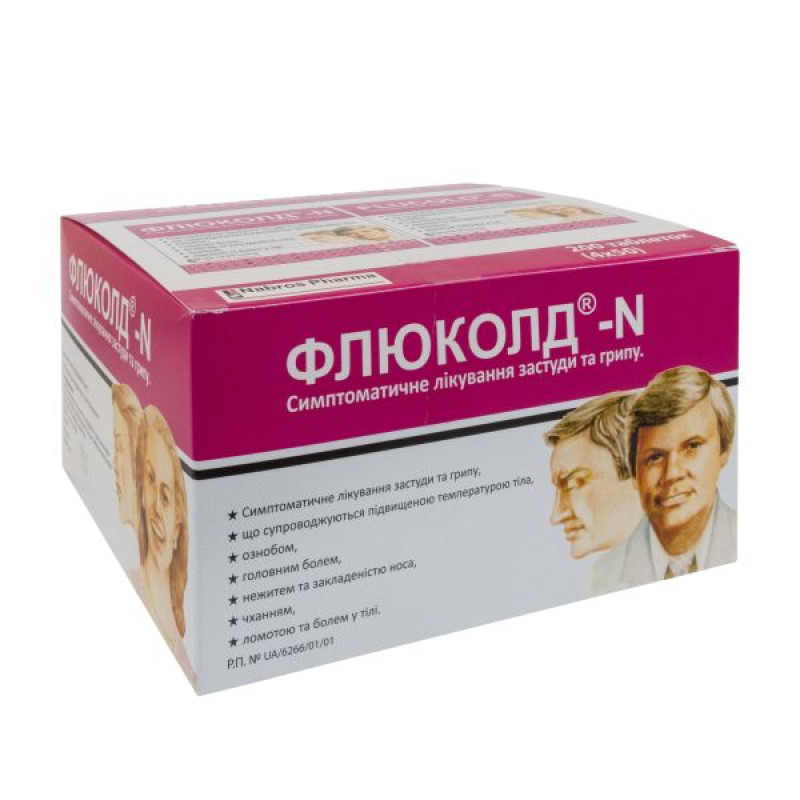
Instructions for Flucold-N tablets strip No. 200
Composition
active ingredients: 1 tablet contains paracetamol 500 mg, caffeine 30 mg, phenylephrine hydrochloride 5 mg, chlorpheniramine maleate 2 mg;
excipients: corn starch, sodium starch glycolate (type A), talc, gelatin, magnesium stearate, sorbitol solution (E 420), Povidone K-30, sodium benzoate (E 211), Ponceau 4R dye (E 124), purified water.
Dosage form
Pills.
Main physicochemical properties: round, uncoated tablets of pink color with dark pink inclusions.
Pharmacotherapeutic group
Analgesics and antipyretics. Paracetamol, combinations without psycholeptics.
ATX code N02B E51.
Pharmacological properties
Pharmacodynamics.
The pharmacological activity of the drug is due to the properties of paracetamol, caffeine, phenylephrine hydrochloride and chlorpheniramine maleate, which are part of the drug. Paracetamol has antipyretic, analgesic and anti-inflammatory effects. The mechanism of action is associated with inhibition of prostaglandin synthesis.
Caffeine has a stimulating effect on the central nervous system, mainly on the cerebral cortex, respiratory and vasomotor centers, increases mental and physical performance, reduces drowsiness, fatigue, and weakens the effect of drugs that depress the central nervous system.
Phenylephrine hydrochloride has a vasoconstrictor effect, reduces swelling of the nasal mucosa and paranasal sinuses.
Chlorpheniramine maleate has antihistamine and anticholinergic effects. By blocking
H1-receptors, has an antiallergic effect, reduces the permeability of the vessels of the mucous membrane of the upper respiratory tract, reduces tearing, itching in the eyes and nose.
Pharmacokinetics.
Not studied.
Indication
Symptomatic treatment of colds and flu accompanied by fever, chills, headache, runny nose and nasal congestion, sneezing, aches and pains in the body.
Contraindication
Hypersensitivity to the components of the drug, other xanthine derivatives (theophylline, theobromine). Chronic obstructive pulmonary disease. Emphysema. Severe cardiovascular diseases, including conduction disorders, severe atherosclerosis, severe ischemic heart disease. Acute myocardial infarction. Peripheral artery thrombosis. Decompensated heart failure. Ventricular tachycardia. Hyperthyroidism. Severe liver and/or kidney dysfunction. Acute pancreatitis, hepatitis. Stenosing gastric and duodenal ulcer. Congenital hyperbilirubinemia. Severe arterial hypertension. Prostate adenoma with difficulty urinating. Bladder neck obstruction. Blood diseases (severe anemia, leukopenia), hyperthyroidism. Pyloroduodenal obstruction. Pheochromocytoma. Diabetes mellitus. Bronchial asthma. Angle-closure glaucoma. Glucose-6-phosphate dehydrogenase deficiency. Alcoholism. Increased excitability. Sleep disorders. Epilepsy. Simultaneous use with monoamine oxidase inhibitors (MAO) and within 2 weeks after stopping their use. Simultaneous use with tricyclic antidepressants, β-blockers. Elderly patient (from 60 years).
Pregnancy or breastfeeding. Children under 12 years of age.
Interaction with other medicinal products and other types of interactions
The rate of absorption of paracetamol may increase when used with metoclopramide and domperidone and decrease with cholestyramine. With simultaneous long-term use, the anticoagulant effect of coumarins (e.g. warfarin and other coumarins) is enhanced with an increased risk of bleeding due to prolonged regular use of paracetamol. Single doses do not show a significant effect. Barbiturates reduce the antipyretic effect of paracetamol. Anticonvulsants (phenytoin, barbiturates, carbamazepine), which stimulate microsomal liver enzymes and isoniazid, may increase the hepatotoxicity of paracetamol due to an increase in the degree of conversion of the drug to hepatotoxic metabolites. Paracetamol reduces the effectiveness of diuretics.
Do not use simultaneously with alcohol.
The interaction of phenylephrine hydrochloride with MAO inhibitors causes a hypertensive effect, with tricyclic antidepressants (amitriptyline) - increases the risk of cardiovascular side effects, with digoxin and cardiac glycosides - leads to arrhythmias and myocardial infarction. Phenylephrine with other sympathomimetics increases the risk of adverse cardiovascular reactions, may reduce the effectiveness of β-blockers and other antihypertensive drugs (reserpine, methyldopa) with an increased risk of arterial hypertension and adverse cardiovascular reactions.
Phenylephrine may cause adverse reactions when used simultaneously with indamethacin and bromocriptine (severe arterial hypertension). The use of phenylephrine hydrochloride with sympathomimetic amines increases the risk of arrhythmias and myocardial infarction.
The depressant effect of chlorpheniramine maleate can be significantly increased by simultaneous use of the drug with: hypnotics, barbiturates, sedatives, neuroleptics, tranquilizers, anesthetics, narcotic analgesics, alcohol. Chlorpheniramine maleate enhances the anticholinergic effect of atropine, antispasmodics, tricyclic antidepressants, antiparkinsonian drugs.
Caffeine enhances the effect (improves bioavailability) of analgesics-antipyretics, potentiates the effects of xanthine derivatives, α- and β-adrenomimetics, and psychostimulants.
Concomitant use of caffeine with MAO inhibitors may cause a dangerous increase in blood pressure.
Cimetidine, hormonal contraceptives, and isoniazid enhance the effects of caffeine.
Caffeine reduces the effect of opioid analgesics, anxiolytics, hypnotics and sedatives, is an antagonist of anesthetics and other drugs that depress the central nervous system, a competitive antagonist of adenosine drugs, ATP. With simultaneous use of caffeine with ergotamine, the absorption of ergotamine in the gastrointestinal tract improves, with thyroid-stimulating drugs - the thyroid effect increases. Caffeine reduces the concentration of lithium in the blood.
When used simultaneously with flucloxacillin, there is a risk of metabolic acidosis with a high anion gap, especially in patients with risk factors (see section "Special instructions").
Application features
Do not exceed the specified dose.
Concomitant use with other drugs intended for the symptomatic treatment of colds and flu, or drugs containing paracetamol, should be avoided.
This medicine is not recommended for use simultaneously with sedatives, hypnotics or beverages containing alcohol.
The drug is prescribed by a doctor only after assessing the risk/benefit ratio in the following cases: arterial hypertension; heart rhythm disturbances; urination disorders. If, on the recommendation of a doctor, the drug is used for a long period, it is necessary to monitor the functional state of the liver and the peripheral blood picture.
When using the drug, you should avoid excessive consumption of coffee, strong tea, other tonic drinks and medications containing caffeine. This may cause sleep problems, tremors, tension, irritability, and palpitations.
Before using the drug, it is necessary to consult a doctor if the patient is using warfarin or similar drugs that have an anticoagulant effect.
It is necessary to consult a doctor regarding the possibility of using the drug in patients with impaired kidney and liver function.
It should be noted that patients with alcoholic liver disease are at increased risk of hepatotoxic effects of paracetamol; the drug may affect the results of laboratory tests for blood glucose and uric acid.
Patients with severe infections such as sepsis, accompanied by decreased glutathione levels, are at increased risk of metabolic acidosis when taking paracetamol. Symptoms of metabolic acidosis include deep, rapid or difficult breathing, nausea, vomiting, loss of appetite. You should seek immediate medical attention if these symptoms occur.
Patients who take analgesics every day for mild arthritis should consult a doctor.
If symptoms persist, you should consult a doctor.
If the headache becomes persistent, you should see a doctor.
This medicinal product contains sorbitol solution (E 420). If you have been told by your doctor that you have an intolerance to some sugars, contact your doctor before taking this medicinal product.
The medicine contains the dye Ponceau 4R (E 124), which may cause allergic reactions.
Caution is advised when using paracetamol concomitantly with flucloxacillin due to an increased risk of high anion gap metabolic acidosis (HAGMA), particularly in patients with severe renal insufficiency, sepsis, malnutrition and other sources of glutathione deficiency (e.g. chronic alcoholism), and in patients taking the maximum daily dose of paracetamol. Close monitoring, including measurement of urinary 5-oxoproline, is recommended.
Use during pregnancy or breastfeeding
Contraindicated.
Ability to influence reaction speed when driving vehicles or other mechanisms
During treatment with Flucold®-N, driving, operating machinery, and other hazardous activities should be avoided.
Method of administration and doses
Adults and children over 12 years of age should be prescribed 1 tablet every 3-4 hours, but not more than 4 tablets per day. The interval between doses is at least 4 hours. The duration of treatment is determined by the doctor. The maximum period of use without consulting a doctor is 3 days.
Do not take with medicines containing paracetamol.
Children
The drug should be used in children over 12 years of age.
Overdose
When taking large doses, disorientation, agitation, dizziness, sleep disturbances, heart rhythm disturbances and pancreatitis may occur. In isolated cases, acute renal failure with tubular necrosis, manifested by lower back pain, hematuria, proteinuria; nephrotoxicity (renal colic, interstitial nephritis) has been reported.In severe poisoning, liver failure can progress to encephalopathy, hemorrhage, hypoglycemia, coma, and be fatal.
The use of 10 g or more of paracetamol in adults, especially in combination with alcohol, and more than 150 mg of paracetamol per 1 kg of body weight in children can lead to hepatocellular necrosis with the development of encephalopathy, hepatic coma and death. The first clinical signs of hepatonecrosis may appear 12-48 hours after overdose. Glucose metabolism disorders and metabolic acidosis may occur.
Cardiac arrhythmia and pancreatitis were also noted.
With prolonged use of the drug in high doses, aplastic anemia, pancytopenia, agranulocytosis, neutropenia, leukopenia, thrombocytopenia may develop from the hematopoietic system. When taking large doses, from the central nervous system - dizziness, psychomotor agitation and disorientation; from the urinary system - nephrotoxicity (renal colic, interstitial nephritis, capillary necrosis).
In case of overdose, urgent medical attention is required. The patient should be taken to hospital immediately, even if there are no early symptoms of overdose. Symptoms may be limited to nausea and vomiting or may not reflect the severity of the overdose or the risk of organ damage. Treatment with activated charcoal should be considered if the overdose of paracetamol has been taken within 1 hour. The concentration of paracetamol in the blood plasma should be measured 4 hours or later after ingestion (earlier concentrations are unreliable). Treatment with N-acetylcysteine can be used within 24 hours of paracetamol ingestion, but the maximum protective effect occurs when it is used within 8 hours of ingestion. The effectiveness of the antidote decreases sharply after this time. If necessary, the patient should be given intravenous
N-acetylcysteine according to the established dose list. In the absence of vomiting, oral methionine may be used as a suitable alternative in remote areas outside the hospital.
Overdose of phenylephrine hydrochloride causes hyperhidrosis, psychomotor agitation or CNS depression, headache, dizziness, drowsiness, impaired consciousness, arrhythmias, tremor, hyperreflexia, convulsions, nausea, vomiting, irritability, anxiety, and arterial hypertension.
In case of an overdose of chlorpheniramine maleate, atropine-like symptoms may be observed: mydriasis, photophobia, dry skin and mucous membranes, increased body temperature, intestinal atony. CNS depression is accompanied by respiratory disorders and disorders of the cardiovascular system (decreased pulse rate, decreased blood pressure up to vascular insufficiency).
Large doses of caffeine can cause epigastric pain, vomiting, diuresis, rapid breathing, extrasystole, tachycardia or cardiac arrhythmia, effects on the central nervous system (dizziness, insomnia, nervous excitement, irritability, affective state, anxiety, tremor, convulsions). Clinically important symptoms of caffeine overdose are also associated with liver damage by paracetamol.
Treatment: Within the first 6 hours after a suspected overdose, gastric lavage should be performed with subsequent hospitalization of the patient.
During the first 8 hours after overdose - use of methionine orally or intravenous administration of cysteamine or N-acetylcysteine; symptomatic therapy; in severe arterial hypertension - use of α- and β-adrenergic blockers.
Adverse reactions
Immune system disorders: anaphylaxis; hypersensitivity reactions, including pruritus, rash on the skin and mucous membranes (usually generalized rash, erythematous, urticaria), angioedema; erythema multiforme exudative (including Stevens-Johnson syndrome); toxic epidermal necrolysis (Lyell's syndrome).
From the nervous system: headache, dizziness, psychomotor agitation, disorientation, anxiety, nervous excitement, feeling of fear, irritability, sleep disturbances, insomnia, drowsiness, confusion, hallucinations, depressive states, tremor, tingling and heaviness in the limbs, tinnitus, epileptic seizures, anxiety; in some cases - coma, convulsions, dyskinesia, behavioral changes, general weakness.
Respiratory system: bronchospasm in patients sensitive to acetylsalicylic acid (aspirin) and other nonsteroidal anti-inflammatory drugs.
On the part of the organs of vision: impaired vision and accommodation, mydriasis, increased intraocular pressure, dry eyes.
On the part of the digestive tract: nausea, vomiting, heartburn, dry mouth, discomfort and pain in the epigastric region, diarrhea, constipation, flatulence, hypersalivation, decreased appetite, exacerbation of peptic ulcer disease.
On the part of the endocrine system: hypoglycemia, up to hypoglycemic coma.
On the part of the blood system: anemia, including hemolytic; thrombocytopenia, agranulocytosis, neutropenia, pancytopenia, leukopenia, sulfhemoglobinemia and methemoglobinemia (cyanosis, shortness of breath, pain in the heart area), bruising or bleeding.
From the urinary system: nephrotoxicity, interstitial nephritis, papillary necrosis, urination disorders, dysuria, urinary retention, aseptic pyuria, renal colic.
Cardiovascular system: arterial hypertension, tachycardia or reflex bradycardia, arrhythmia, shortness of breath, pain in the heart area, palpitations.
Others: increased creatinine clearance, increased sodium and calcium excretion, nasal congestion; possible false increase in blood uric acid, determined by the Bittner method; slight increase in 5-hydroxyindoleacetic acid, vanillylmandelic acid and catecholamines in urine.
Taking the drug at recommended doses with products containing caffeine may increase caffeine-induced side effects, such as dizziness, increased excitability, insomnia, restlessness, anxiety, irritability, headache, gastrointestinal disorders, and rapid heartbeat.
Expiration date
4 years.
Storage conditions
Store in a dry place, protected from light and out of reach of children at a temperature not exceeding 25 ºС.
Packaging
No. 4 – 4 tablets in a strip in a paper envelope;
No. 12 – 4 tablets in a strip, 3 strips in a cardboard box;
No. 200 – 4 tablets in a strip in a paper envelope, 50 envelopes in a cardboard box.
Vacation category
No. 4; No. 12 - without a prescription, No. 200 - by prescription.
Producer
Nabros Pharma Pvt. Ltd.
Location of the manufacturer and address of its place of business
Survey No. 110/A/2 Amit Farm, Jain Upasrya, Near Coca Cola Plant, N.H. No. 8, Kajipura – 387411, Kheda, India.
There are no reviews for this product.
There are no reviews for this product, be the first to leave your review.
No questions about this product, be the first and ask your question.







